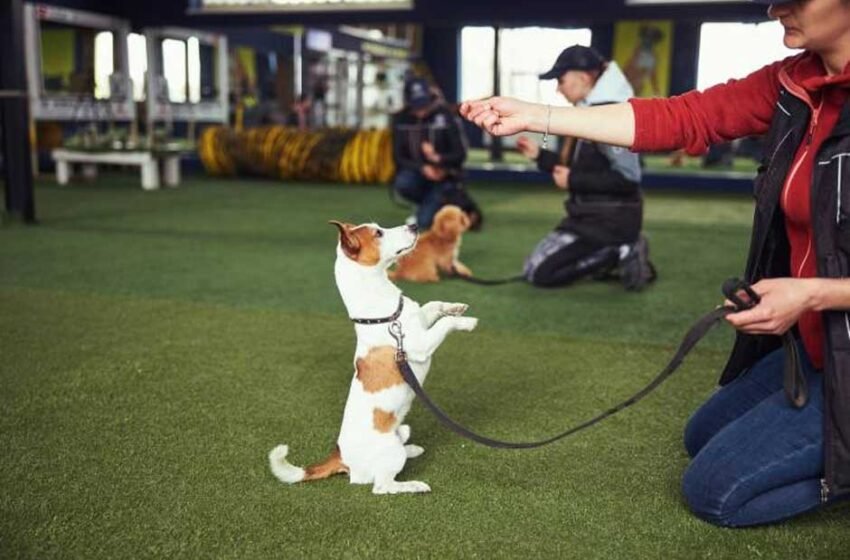Why Training and First Aid Go Hand-in-Paw in Good Dog Care

Caring for a dog isn’t just about food, walks, and belly rubs. Behind every happy pup is a human who’s done a little homework. Training and first aid might not sound like the most glamorous parts of pet parenting, but they’re essential if you want to raise a dog who’s not just adorable but also safe, confident, and healthy. From potty-training success stories to knowing when to call the vet, there’s a learning curve. Here’s how six key habits and skills can help you go from simply owning a dog to actually knowing how to care for one.
Mastering the Art of Potty Training Without Losing Your Mind
Every dog owner has a moment where they question their decision to have a furry friend, and it’s usually while scrubbing the carpet at 2 a.m. Potty training your pooch will test your patience, but it doesn’t have to be a mess of guesswork. One of the smartest tools for new pet parents is a consistent setup that includes well-placed puppy training pads. These aren’t a forever solution, but when used properly, they teach your pup where it’s safe to go when outdoor access isn’t an option.
The trick isn’t just putting a pad on the floor and hoping for the best. Dogs, even tiny ones, thrive on patterns. You’ll want to pay attention to their timing, watch for circling or sniffing behavior, and guide them to the pad with encouragement rather than scolding. Puppy training pads can give your dog a clear, structured space to develop good habits, especially during the early weeks when accidents are more about confusion than rebellion.
How to Handle Wounds Like a Pro
Dogs play hard. And sometimes they get hurt doing it. Whether it’s a scratch from roughhousing at the dog park or a scrape from an unfortunate squirrel chase, knowing how to offer basic first aid makes a huge difference. You don’t have to be a vet to manage minor injuries, but you do need to know what normal healing looks like and when something’s off.
Understanding the different dog wound healing stages can help you determine if a scratch is on the mend, or if there’s an infection brewing under the surface. In the early stage, the wound will clot and start to scab over. Then comes the inflammation, which might look a little alarming with some swelling or redness. That’s actually part of the natural process. Over time, healthy tissue begins to regrow, and you’ll notice a gradual reduction in scabbing and discharge. If things smell bad, keep bleeding, or suddenly get worse after a few days, that’s your cue to call in the pros.
Behavior Training Isn’t Just for “Problem Dogs”
People often think behavior training is only for dogs who bark too much, jump on guests, or try to eat the mail carrier. But it’s really about communication. A well-trained dog knows how to read your cues, and more importantly, you learn how to read theirs. That mutual understanding makes daily life easier and way more enjoyable.
Behavior training isn’t about dominating your dog or turning them into a robot. It’s about teaching routines, setting limits, and helping your dog feel safe and confident. Teaching basic commands that include “sit,” “stay,” and “leave it” can prevent everything from dropped food disasters to dangerous darting during walks. Even better, these moments of training often become play because your dog gets to think, you get to praise, and everyone ends up feeling successful.
When a Trip to the Vet Is the Best Call You Can Make
There’s a fine line between overreacting and ignoring something serious. Knowing when to call the vet is a skill that every dog owner should develop. A limp that doesn’t go away after a day, vomiting that’s more than a one-off, or a change in appetite that sticks around are all signs that shouldn’t be brushed aside.
The key is knowing what’s normal for your dog. Some dogs run hot, some run cold. Some are dramatic sneezers, and others barely flinch when they’re hurt. You’ll want to be in tune with their usual energy, eating habits, and body language. That way, when something is off, it won’t take you days to notice.
Emergency Readiness Isn’t Paranoia, It’s Smart
No one wants to think about emergencies, but dogs are like toddlers with stronger jaws and fewer filters. They’ll eat something strange, run into traffic, or get stung by a bee when you’re least expecting it. Having a basic emergency kit on hand, knowing where the nearest 24-hour vet is, and keeping a few key phone numbers in your contacts is important.
You don’t need to overthink it. A few essentials like tweezers, gauze, an antiseptic spray, and a digital thermometer can go a long way. If you hike or camp with your dog, bring extras. Accidents don’t only happen at home, and being prepared can prevent panic. You won’t regret packing that kit when you’re two hours from the nearest clinic and your dog had a run in with a cactus.





